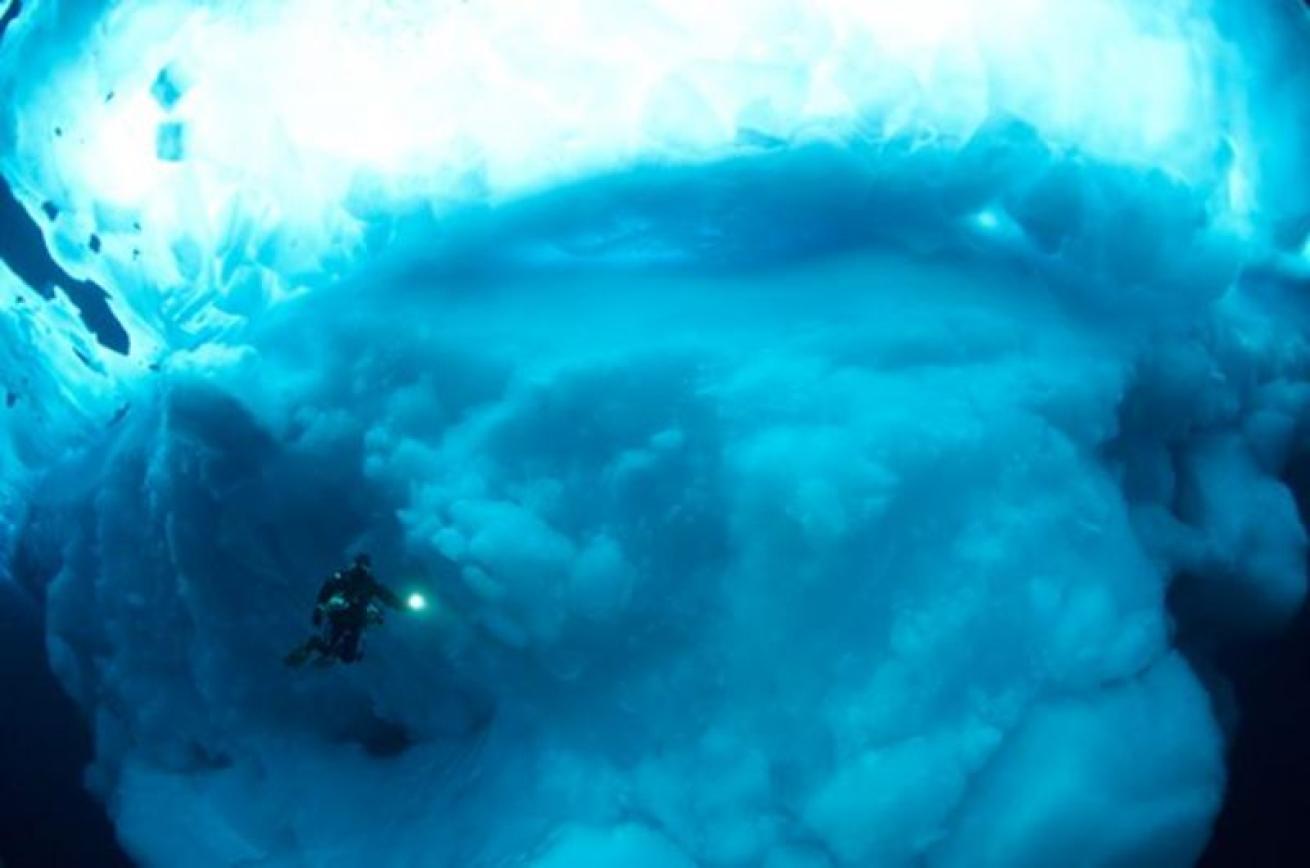Video: Under The Polar Ice Cap

Under the polar ice cap lies a hidden universe, a spectacular ecosystem that is rapidly disappearing due to climate change. This spring a crew of eight young scuba divers and adventurers — and one very cool dog — set out to catalog what we are losing with DeepSea Under the Pole, an expedition mounted by Rolex, which has supported extreme exploration since the 1930s. Planned to cover 500 miles of Arctic Ocean ice from the North Pole to Canada’s Ellesmere Island — ski trekking 45 days with 15 days of diving — the expedition was forced off the ice early by deteriorating conditions. “The ice is fragmenting into pieces more and more every day; we heard cracking noises underwater a few days ago while diving,” expedition leader Ghislain Bardout, 30, explained in May, when it was decided it was time to get out. But the expedition still was a huge success, completing 51 dives and shooting nearly 40 hours of video and more than 10,000 images that will be used to create a book and 90-minute documentary. The team also gathered measurements of snow and ice thickness and conducted experiments on human physiology, especially in relation to treatment of decompression sickness — divers swallowed “Wi-Fi” pills, allowing for their bodies’ reactions to be tracked during dives.

Under the polar ice cap lies a hidden universe, a spectacular ecosystem that is rapidly disappearing due to climate change. This spring a crew of eight young scuba divers and adventurers — and one very cool dog — set out to catalog what we are losing with DeepSea Under the Pole, an expedition mounted by Rolex, which has supported extreme exploration since the 1930s. Planned to cover 500 miles of Arctic Ocean ice from the North Pole to Canada’s Ellesmere Island — ski trekking 45 days with 15 days of diving — the expedition was forced off the ice early by deteriorating conditions. “The ice is fragmenting into pieces more and more every day; we heard cracking noises underwater a few days ago while diving,” expedition leader Ghislain Bardout, 30, explained in May, when it was decided it was time to get out. But the expedition still was a huge success, completing 51 dives and shooting nearly 40 hours of video and more than 10,000 images that will be used to create a book and 90-minute documentary. The team also gathered measurements of snow and ice thickness and conducted experiments on human physiology, especially in relation to treatment of decompression sickness — divers swallowed “Wi-Fi” pills, allowing for their bodies’ reactions to be tracked during dives.






